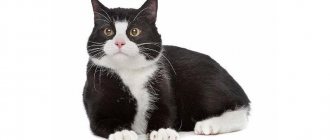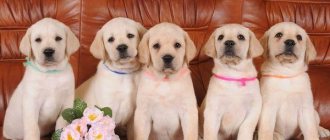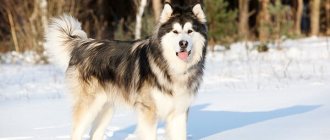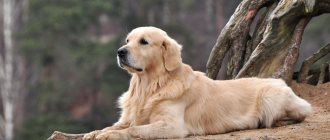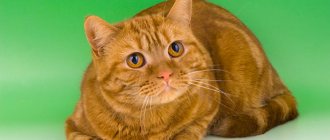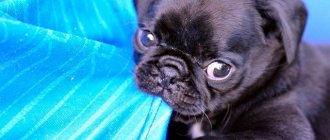A predatory look, a muscular, powerful body and myths about their fighting past make Stafford dogs monsters among the representatives of the dog world. In fact, dog fighting is just a sick hobby of people who decide to make the dog a participant in fights for money. Stafford can be an affectionate and kind pet. Especially the blue Staffordshire Terrier.
The blue Stafford can be an affectionate and devoted pet.
Origin of the breed
The Stafford breed, or Amstaff, as they are also called, begins its history in the 19th century. Modern Staffords acquired their name relatively recently - in 1972. They used to be called pit bulls or bull terriers. Although many still call them that today. The exterior of Amstaffs is the result of crossing Game Terriers with Bulldogs.
Work on the characteristics of this breed made it possible to obtain a dog with innate activity that has no equal. Its original purpose was as a participant in dog fighting. But upon long-term observation, it turned out that the dogs have excellent hunter abilities, and also have extraordinary intelligence. Thus, Amstaffs appeared in human domains as guards of houses, farmlands, and even participated in herding cattle. And a little later they became friends and companions for the person.
Representatives of the blue color of the breed, like other colors, were bred through the painstaking work of specialists.
Their task was to remove aggression from the dog’s character, which had been genetically embedded in the animal’s blood for many years. Note! Modern Staffords are only superficially similar to their formidable, aggressive fighting ancestors.
Today, Staffords are only superficially similar to their fighting ancestors.
Origin story
The history of the creation of the breed dates back to ancient England. The staff dog was obtained by crossing two breeds - a bulldog and a terrier. From the first, the Stafford received endurance and ferocity, and from the second, he received agility and mobility. The result was a courageous and aggressive dog. The question arises as to why the British would ever need such a ferocious dog .
Initially, the British needed a strong and brave dog to protect their territory and houses . By crossing various breeds, a bulldog was obtained. Then an eccentric belief began that bull meat would be much tastier if the bull was first tortured half to death and then slaughtered. Dogs were used for these purposes. With a death grip she bit into the unfortunate animal, and when it could no longer resist, the butchers slaughtered it. By the way, it was no coincidence that the breed was called a bulldog - “bull” is translated as bull.
The British liked the terrible bloody entertainment. Hordes of rats brought little pleasure to people, so special breeds of dogs were bred to combat them. The large breeds of dogs used in bull baiting were too slow and clumsy to fight crowds of rodents. It was then that strong, but clumsy bulldogs were crossed with terriers, and a new breed was obtained - the pit bull terrier, which was more active and nimble and could deal with hordes of rats for the amusement of people.
Then a new bloody sport appeared - dog fighting. The creepy entertainment quickly gained popularity and began to bring considerable income to the organizers. Gradually, the bloody betting spread to other countries - Mexico, the States, Canada. In order to make the dog even stronger and tougher, it was crossed with some other large breeds. The result was the American Staffordshire Terrier.
When dog fighting was finally banned in the early 20th century, dogs were used on farms as guards. Today the staff is an excellent protector and friend of the whole family. The breed appeared in Russia only at the end of the 20th century.
There is one very similar breed - the American Pitbull Terrier. These two breeds are often confused. The main differences between them are that Staffs are wider, stronger and, most importantly, much friendlier than pit bulls.
Description and requirements for the breed standard
The Blue Stafford, like his breed brothers of other colors, is an athletic, hardy, courageous and very loyal animal to humans. The dog has excellent qualities as a guard and hunter, but at the same time can be a loyal friend and companion. He treats well not only adults, but also children.
Breed standard
Breed standards define the following parameters:
- The height of males varies from 45 to 48 cm, while that of females does not exceed 46 cm.
- Weight up to 30 kg for males, up to 27 kg for girls.
- Lack of weight, like excess weight, is considered a gross vice.
- The head is powerful with well-defined cheekbones and a noticeable transition between the forehead and muzzle.
- The eyes are deep-set, mostly dark, and small. Representatives of the blue color have gray or blue shades of the cornea of the eye.
- The ears are cropped, but you can do without this procedure; they are slightly curved downwards at the tips.
- Jaws are well developed and powerful
- The nose is black.
- The neck is wide and strong.
- The coat is short, thick, shiny.
- Springy gait on widely spaced strong paws of medium size.
There are many shades of coat. The gray and blue Stafford has a coat with a silver coating and a nose with a grayish tint in the light.
The breed standard was officially adopted in 1972
Important! According to the breed standard adopted in 1972, Amstaffs can be of any tone and shade. White color should not go beyond 80% of the animal's total coat color.
General information
Later, the fighting skills of the breed attracted the attention of the organizers of dog fights, so the vector of selection began to shift towards stockier and more ferocious individuals. After the ban on mass dog fights, interest in the Stafford breed began to fade; few people needed the fighting qualities of dogs in everyday life. The revival of the breed and the time of approval of its standards can be considered the 70s of the twentieth century, when breeders from the USA became interested in it. That’s when the prefix “American” appeared in the name of the breed. The second boom in the popularity of the breed is considered to be the 90s of the twentieth century, when interest in dogs of fighting breeds increased sharply. Now the breed is in price only among true lovers of fighting dog breeds.
External characteristics
Despite the fact that the breed standard was formed relatively recently, the standard dog will be considered a Stafford weighing up to 30 kilograms; at the withers, the height of a male should reach 48 cm; in females, the maximum height at the withers is 46 cm. The body is tight, with a strong muscular frame, the paws are widely spaced - the dog seems to be in a show rack. The head, relative to the body, is not large, with semi-erect ears, docking is allowed. The jaws should have a scissor bite, the lower jaw is responsible for the “dead grip”.
The color of the breed plays an important role in the quality of the puppy. Multiple color variations are allowed, but priority remains with solid, brindle, or spotted dogs.
Eye color can vary from brown to black. But beautiful blue eyes are not in price among American Staffordshire Terriers - this is considered a defect in the breed, just like completely white individuals. The breed's coat itself is short, dense, and the surface hairs are silky.
INTERESTING FACT: during the period of breeding the breed for fighting, cropped ears were considered the breed standard, but now this norm is no longer valid.
Character traits
Despite the fact that the Stafford is a fighting breed, a distinctive character trait can be called devotion to the owner and an affectionate disposition. The manifestation of unreasonable aggression is typical for a small number of dogs and is most often associated with omissions in training, or with the behavior of the owner himself. The Staffordshire Terrier is like a mirror of the owner - the calmer and more authoritative the owner, the friendlier and sweeter his dog.
The dog is very active, it is vital for her to be in motion, play with her owner, swim and spend her boundless energy, otherwise she begins to entertain herself. A self-occupied dog can destroy a house, chew through all things, and a long absence of an owner nearby makes it ultimately aggressive and extremely disobedient. The personality of the owner plays a key role in the final character of the Stafford, this breed has a highly developed sense of hierarchy - it recognizes the family as a pack and needs a leader.
Aggressive character traits in a properly trained dog appear only when necessary to protect the owner and home. Sensing danger, the dog takes a stance and prepares for battle, so the owner should monitor the pet’s behavior during a walk, and for safety and peace of mind it is better to use a leash and muzzle. But at the same time, the staff are very friendly towards the members of the seven and are ready to give their boundless love and devotion, often showing a high level of empathy.
Advantages and disadvantages
Advantages of the breed:
- quick learner and well-developed intelligence;
- loyalty and devotion to the owner;
- reliable protection and security of the owner;
- good nature towards other animals;
- unquestioning execution of commands with good training.
Despite its advantages, Staffords have some disadvantages:
- the risk of developing aggression in character in the absence of proper education;
- intolerance of loneliness and long separation from the owner.
Character
For a long time, the American Staffordshire Terrier was considered an aggressive dog. Breeders have dispelled these myths by the very behavior of the animal in relation to humans and other animals. Dogs are infinitely devoted to the entire family of their owner. They have a soft, good-natured character, are cheerful and active.
The dog understands the difference between adults and children. He treats children with reverence and tenderness. When playing with children, she is always careful and does not allow any sudden movements or threatening sounds on her part. She will be a caring nanny and a good protector for the children. It attacks people as a last resort if it sees a direct threat to the life of the owner.
Unmotivated cases of aggressive behavior are excluded to the maximum extent possible in the breed standard. Proper upbringing of the Amstaff results in a reserved but courageous pet, ready to defend the owner to the last, but only on command.
Despite its menacing appearance, the Blue Stafford has a good-natured and friendly character.
Important! A blue Amstaff needs a competent, adequate owner who will not give commands to the dog that are contrary to logic and pose a threat to others.
Myths about the “blue color”
In recent years, the blue color has become very popular among Staffordshire Bull Terrier owners and currently accounts for the largest percentage of registered colors in the breed's homeland of Great Britain. Unfortunately, the growing popularity of this color has led to irresponsible breeding solely for color due to the high prices for such puppies. Some blue only breeders make many false claims about their Staffbulls to justify their cost.
Some myths
- Never in the history of the breed has any Blue Staffordshire Bull Terrier been recognized as a Top Producer.
- Never in the history of the breed has any blue Staffordshire bull terrier won the title of Champion of England.
- No blue Staffordshire Bull Terrier has a black nose or black nails (genetically impossible)
- Not a single blue Staffordshire Bull Terrier is pure blue (all blue Staffbulls are genetically blue brindle, it’s just that brindle is more or less pronounced)
- Blue coloring in Staffordshire Bull Terriers is not uncommon.
How did the blue color come about?
Roughly speaking, the blue color in the Staffordshire Bull Terrier breed is the result of an abnormality of the black-brindle gene, causing a weakening of the latter. This is a gene that affects the formation of hairs with larger (non-standard) pigment granules due to disruption of melanin transport and content. This “clumping” of pigment leads to “washing out” and weakening of the color. This gene is recessive, i.e. In order for a Staff Bull to have a weakened (blue) color, it must inherit this gene from both parents. Essentially blue is black and brindle when “something has gone wrong.”
Eg
A black and brindle Staffbull (not carrying the dilute gene) mated to a black and brindle Staffbull bitch (not carrying the dilute gene) will produce black and brindle puppies that will also not carry the gene.
A black brindle Staffbull (not carrying the dilute color gene) mated to a blue Staffbu bitch will produce black brindle puppies that will partially carry the dilute color gene.
A blue Staffbull mated to a black brindle Staffbull bitch who carries the dilute color gene will produce both blue and black brindle puppies, all of which will carry the dilute color gene.
A blue Staffbull mated to a blue Staffbull bitch will produce a litter that will be entirely of a weakened color.
There is concern that blue (weakened) Staffordshire Bull Terriers are at increased risk of skin problems associated with this mutation. It is generally accepted that the long-term practice of breeding blues with blues over several generations leads to a problem such as CDA (color dilution alopecia).
CDA (Color Diminution Alopecia) is associated with a color dilution gene, probably the D locus. Under the influence of multiple genes, color diluted hair has larger, abnormal pigment granules due to disruption of the transport and storage of melanin. It is this “accumulation” of pigment that leads to blurring or weakening of the color. It is still not known for certain whether the weakened color gene is directly responsible for changes in skin quality or whether there is a gene associated with it that causes changes in the follicles. However, it is absolutely certain that the accumulation of pigment leads to deformation of the hair shafts and their fractures, which leads to alopecia.
Can a blue dog be exhibited?
If your Staffordshire Bull Terrier has a certificate of origin of the appropriate type, is registered in the kennel club of the FCI country or a partner country, then you can participate with it in exhibitions along with other dogs. Blue color is recognized as the standard among others. A good dog is a good dog regardless of color. Experts at exhibitions are called upon to judge and do not judge color, but rather the dog’s compliance with the breed standard.
The reason why Blue Staffordshire Bull Terriers have traditionally not been very successful in the show ring is that when breeding them, breeders often have the goal of color rather than standard dogs. But nevertheless, history knows several examples of high-class blue staffbulls that were exhibited and achieved success.
Training and education
The dog is adapted to 3 types of motivations: social, food and playful. When training and raising a Staffordshire Terrier, you should not allow weakness. The owner must show his dominance over the animal from the very first days. Commands are practiced until they become automatic.
The main rule in training is to avoid breaks and relaxation. Training should be daily and targeted. But within reason. The dog should not be overworked. If you do not have enough training skills, it is better to train for some time with specialists or under their supervision.
It is unacceptable to show weakness in training and raising a Staffordshire Terrier.
TOP names and nicknames for the Staffordshire Terrier
Usually, kennels give dogs names that are too long or unpronounceable. For everyday life, the owner can come up with a more suitable nickname - the main thing is that it is sonorous, short and easy to pronounce.
For males
The most suitable nicknames for a Staffordshire Terrier boy could be:
- Art;
- The battle;
- Lord;
- Butch;
- Rich;
- Caesar;
- Max;
- Gore;
- Bard;
- Jack;
- Ram;
- North.
For girls
The following nicknames are perfect for a Staffordshire Terrier girl:
- Alma;
- Reed;
- Gina;
- Irma;
- Varna;
- Willow;
- Mara;
- Rose;
- Yuma;
- Donna;
- Storm;
- Lada.
Maintenance and care
Taking good care of your pet will not only benefit the animal's health, but will also help strengthen good friendships.
Hygiene
Staff care activities involve some procedures:
- Grooming. It needs to be brushed regularly and washed as needed.
- Examination of eyes and ears. Conducted daily. If there is contamination, eyes and ears are wiped with boiled water.
- Caring for the anal glands. Occurs according to indications in the veterinarian's office.
- The oral cavity and teeth should be cleaned with special preparations intended for dogs.
Health and illness
The American Stafford is in excellent health , active and resilient. A dog's well-being can be judged by a wet nose, clear eyes, excellent appetite and the absence of an unpleasant odor. The onset of the disease is indicated by poor appetite, reluctance to play, go for a walk, apathy and indifference.
Characteristic diseases
- Hip dysplasia . Many large dogs suffer from this disease. Its occurrence is associated with improper diet, intensity of physical activity, and genetic predisposition.
- Bloating . Occurs when digestion is disrupted and requires a change in diet.
- Allergic reactions caused by various irritants.
- Eye diseases (development of cataracts, retinal atrophy), etc.
If you contact a veterinary clinic in a timely manner, you can cure any disease or, in extreme cases, minimize the consequences of the disease. Proper care and good living conditions will ensure a life expectancy of 12–15 years .
Vaccinations
Before giving preventive vaccination to puppies or adult dogs, mandatory deworming . Vaccinations can be monovalent (against a specific disease) or polyvalent (complex).
Vaccination will prevent the occurrence of many dangerous diseases : infectious hepatitis, canine distemper, rabies, leptospirosis, etc.
Do not forget to carry out antiparasitic treatment. You can get rid of ticks and fleas using drops on the withers, sprays, special shampoos and collars.
Walk
Walks with the Staffordshire Terrier should be long and active, at least an hour. In the warm season, water games in a river or lake are desirable. The animal's participation in jogging or cycling training is encouraged.
Important! If a gray Stafford with blue eyes is deprived of time for walks, he will get bored at home and start digging holes in the yard or damaging property.
In the warm season, Staffords prefer walks with water games.
Feeding ration
The diet of the Staffordshire Gray Terrier with blue eyes is no different from that of representatives of other coat shades. The main recommendation in feeding is the regimen. Feeding the dog should be done at a precise time and depending on the age. Puppies eat frequently; an adult animal only needs one meal, preferably in the evening.
Meat and offal should predominate in feeding. A quarter of the diet consists of cereals and vegetables. When feeding dry foods, you should follow the instructions for their use. It is forbidden to feed the dog sweets, smoked meats and pickles.
Color and appearance
According to the current standard, the colors of Stafford dogs are usually as follows:
- Black Amstaffs have a bright and deep color without shades. There may also be small spots on the paws and chest.
- Blue Amstaffs. The coat color of Blue Staffordshire Terriers ranges from light blue to dark blue shades. The nose of dogs is blue (matching the color of their coat). Dark blue Staffords have almost black noses.
- Red Staffords have a uniform coat color, and in individuals with the so-called “boar” color, the main background is red and dark on top.
- The American Black Boston Terrier's coat is a combination of white and black: it is white on the face, neck, paws and back, and the rest of the body is black.
- Among brindle-colored Staffords there are individuals of reddish or brindle colors. Their fur comes in different shades - from red to red.
- In Staffies with a blue-fawn color, the coat has a silvery coating. These dogs' noses are always gray and their eyes are dark.
On a note. The main requirement of the FCI is that white spots should occupy no more than 80% of the dog’s body. In addition, liver, black and tan, and solid white coats are considered faulty.
Interesting Facts
Stafford with blue eyes, according to his owners, is endowed with a sixth sense. And some call him the psychic of the dog world. They say he can foresee danger to his owners several days in advance. Whether this is related to the blue color, there is no exact data. But you shouldn’t ignore the dog’s behavior.
From the above, we can conclude that with the acquisition of a Staffordshire Terrier, a loyal, reasonable and balanced friend appears in a person’s life, who will bring joy and love to the home.
American Staffordshire Terrier puppies
You need to buy a Staffordshire Terrier from a large kennel or from a reputable breeder. In such places, great attention is paid to the character qualities of animals, rejecting aggressive or cowardly individuals. A purebred dog of this breed cannot be cheap. The price of a puppy with a pedigree in Moscow starts from 30 thousand rubles. In other cities you can buy an Amstaff for 10-20 thousand. If the price is less than 10 thousand, the puppy may be a mixed breed with genetic abnormalities.
Be sure to read reviews about the nursery and study the living conditions of the animals. The puppy must have all vaccinations and pedigree. When choosing, you need to carefully examine the dog. A thoroughbred staff must have the following characteristics:
- well-fed, but the tummy is not bloated;
- eyes dark, without discharge;
- scissor bite;
- the skin is clean, the coat is smooth without bald spots;
- the ears are clean, without an unpleasant odor;
- the muzzle is round, the paws are plump;
- The baby is calm, inquisitive, playful.
The photographs show what Staffordshire Terrier puppies should look like:
Staff puppies
American Staffordshire Terrier puppies
Amstaff puppies
The final decision about whether to get this dog can be made after a detailed video about it:
Video: American Staffordshire Terrier. The truth about the breed.
American Staffordshire Terriers are popular, but they are not a dog for everyone. Without proper upbringing, the dog will perceive others as a threat and may attack. Because of this, and also because of unscrupulous breeders who do not pay attention to the genetics of dogs when breeding, Staffies have a bad reputation. But purebred terriers are devoid of aggression, have a stable psyche and high intelligence. The owner’s word is law for them; they try to please him in everything. This is the best companion and devoted friend.
